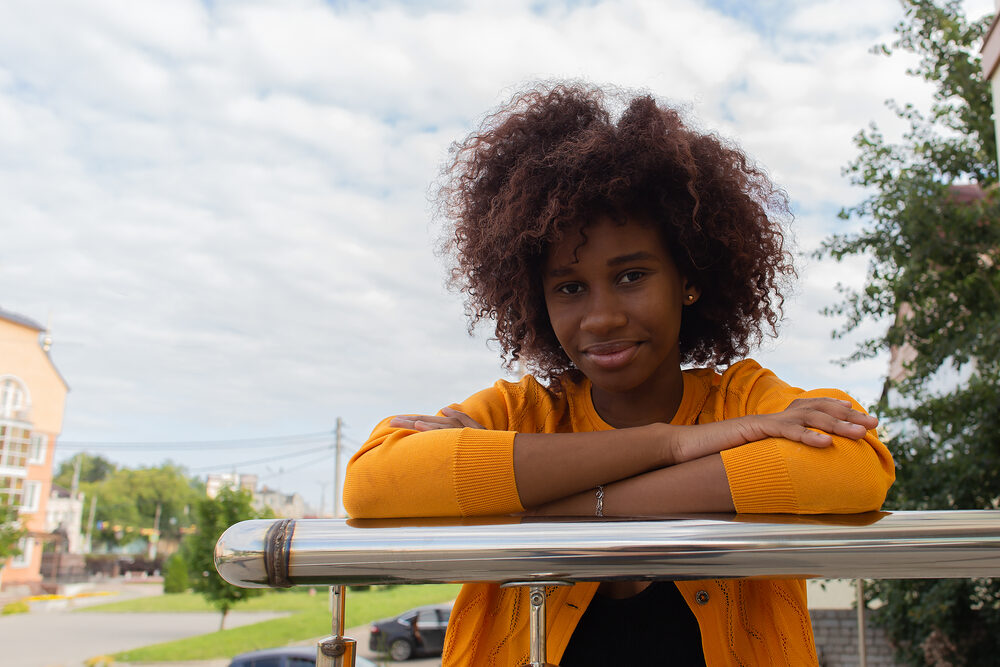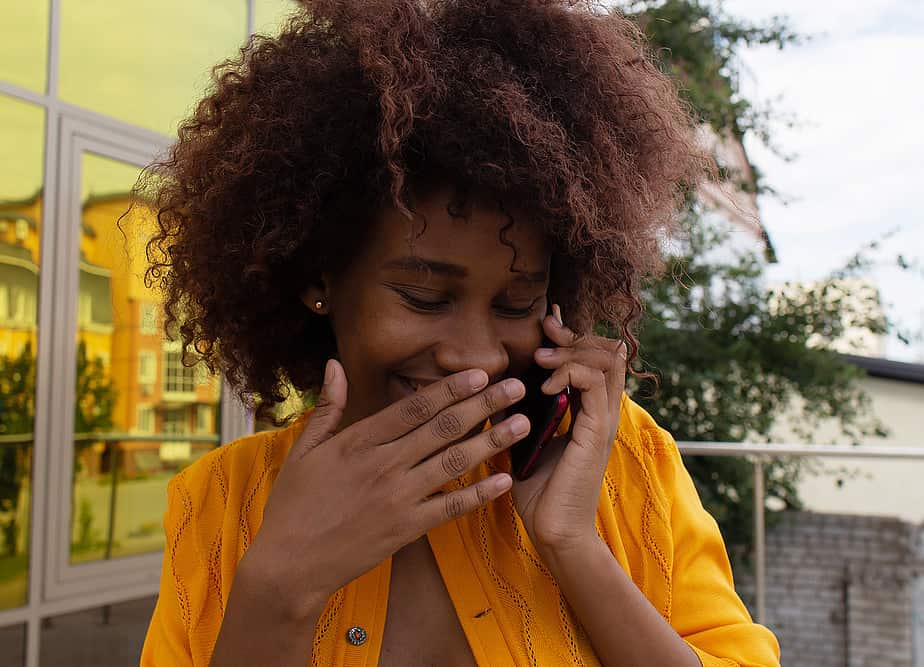
Most curly girls have a single goal when they go natural - to avoid damaged hair at all costs. The problem is many people have no idea how to tell if their hair is damaged.
Knowing the signs of damaged hair will help you spot damage immediately and take swift action. In this article, we will fill you in on how to know if your hair is damaged and tips for treating damaged hair.
Table of Contents
- 1 How To Tell If Your Hair Is Damaged
- 2 Can Damaged Hair Be Repaired?
- 2.1 Hair Care for Damaged Hair
- 2.2 What Are the Signs of Damaged Hair?
- 2.3 Can Damaged Hair Be Repaired?
- 2.4 How Do You Fix Heat Damaged Hair?
- 2.5 What Is the Best Homemade Hair Mask for Damaged Hair?
- 2.6 What Is the Best Deep Conditioner for Damaged Hair?
- 2.7 What Salon Treatment Is Best for Damaged Hair?
- 2.8 Can Mayonnaise Help Damaged Hair?
- 2.9 What Does Damaged Hair Look Like?
- 2.10 How to Know if Your 4C Hair Is Damaged?
- 2.11 What Does Dead Hair Feel Like?
- 2.12 Is My Hair Just Dry or Damaged?
- 2.13 Related Articles
- 2.14 The Journey from Hair Loss and Split Ends to Healthy Hair
How To Tell If Your Hair Is Damaged
Examining your hair for damage is easier than you may think. All it requires you to do is look at your hair, touch it, and pay attention to your hair as you’re washing, styling, or otherwise maintaining it.
Your hair will tell you when it's damaged by exhibiting some clear signs (more on that in the following section.)

Your Hair Strands are Chronically Dry
Often, the first thing people notice when their hair is damaged is that it is chronically dry. Chronic dryness is different from typical dryness that's easily remedied with a deep conditioning session or a few spritzes of moisturizer.
Prolonged or severe dryness lingers and requires considerable effort to improve. You may experience hair dryness if you've been putting your hair through the wringer with chemical treatments and rough styling. It can also be caused by neglecting your hair entirely.
How to fix it: When your hair is damaged to the point of dryness, you’ve got a few options. First, you should intensify your deep conditioning routine. If you haven't been deep conditioning your hair, now is an excellent time to start.
Deep condition your hair starting two times a week, until your hair shows signs of improvement. In addition, always use a leave-in conditioner after your deep conditioner.
And if necessary, slather your hair in a thick moisturizing cream to seal in all that moisture. With this moisturizing routine, you should see the dryness improve within weeks as your hair will retain moisture more easily.

Your Seeing Signs of Increased Hair Breakage
If your hair is mid-length to long and you notice short hairs in your sink or on your counter as you detangle, your hair is breaking. Hair breakage could also manifest in rough-looking, sparse ends.
Sometimes, your hair will snap or break off in your hands – this, of course, is the most severe type of hair breakage.
Many things can cause hair breakage, but the most common causes are chemical treatments, rough detangling or handling, and untreated hair dryness.
How to fix it: For widespread breakage which occurs all over your head, you will need to cut off the worst ends and nurse the rest of your hair back to health. You can do this through:
- Frequent deep conditioning sessions.
- Gentler shampooing habits using a sulfate-free shampoo and a hydrating conditioner.
- Protein treatments (great for when you are experiencing breakage after a chemical treatment).
But if your hair is breaking and you're unable to pinpoint why or fix it, you should reach out to a cosmetologist in your area for a consultation.

Your Hair Gets Tangled Easily
When your hair cuticles are roughed up from damage, they stand on end and are more likely to latch onto other strands and cause tangling. If your hair is suddenly more prone to tangles than usual, it could be that your hair is damaged.
How to fix it: You can do several things to heal your hair and prevent tangles. Applying smoothing products to your hair can make your strands less likely to intertwine and tangle.
In addition, keeping your hair in a braided state or protective style can prevent tangling since your hair will be more restricted and unable to comingle with neighboring strands.
You can also take a few minutes before you go to bed to protect your hair with a silk or satin bonnet or scarf. Doing so will keep your hair from rubbing up against your bedding and getting frayed.
In case you didn't know, rough detangling can rough up your hair cuticles and cause even more damage, knots, and tangles. In addition to the above, take a couple of steps to make detangling sessions easier:
- Never detangle your curls when they’re dry. It’s next to impossible to detangle dry hair gently. Without moisture, they won’t be pliable enough to comb through.
- Always use a slippery detangler or conditioner. Doing so will make your curls slick and easy to comb through.
- Comb through your hair with your fingers or a wide-tooth comb. Do not use a brush.
- Be patient and take your time during the detangling process. Rushing through the process can result in unnecessary hair damage.

You Have Split Ends and Other Hair Damage
Split ends happen when a strand of hair splits at any point along the strand. Typical split ends look like an upside-down “Y” at the end of a hair strand.
Split ends are extremely common - virtually everyone has them. Even so, it’s a sign of damage.
How to fix it: If you have just a few split ends, get a trim. If you have a lot of split ends, you should get a trim and then take steps to prevent more split ends from developing.
You can prevent split ends by keeping your hair moisturized, minimizing heat-styling, being gentle when detangling, and styling your hair infrequently.

You Deal with Uncontrollable Frizziness
Though natural hair is known to be frizzy, if your hair is suddenly frizzier or more unruly than usual, it could be because your hair is damaged.
Excessive frizz may be due to raised hair cuticles, which can stem from hair damage of some kind. For instance, when you dye or bleach your hair, harsh chemicals lift your hair cuticles and remove your natural hair pigment.
After that process, your cuticles never go back to their previous state; instead, they stand on end. This can result in prolonged frizziness.
Frizziness can also be attributed to hair dryness. When your hair is moisturized, its cuticles lie flat and smooth. But if your hair is dry, it is more likely to frizz out and resist styling.
How to fix it: Frizziness can be a monster, but everybody can defeat it somehow. Max hold gels and styling creams can be beneficial when dealing with frizz.
If you apply gel to your hair after washing and conditioning, it can help to keep frizziness at bay. The way you use your styling products can also help with frizz: focus them on your ends and around your hairline, where frizziness is most likely to occur.

Can Damaged Hair Be Repaired?
You can repair your damaged hair in some cases. For instance, if the hair damage you're experiencing is caused by chronic hair dryness, injecting your hair with moisture can solve your hair damage problems.
But if your hair is damaged to the point of structural damage, such as split ends, holes in the hair shaft, or widespread breakage, this is irreparable. You will need to get rid of the damaged hair and focus on growing new healthy hair strands.
Hair Care for Damaged Hair
While you cannot completely repair structurally damaged hair, there are products out there that claim to restore your hair strands on a molecular level. Olaplex is a relatively new product line targeted toward anyone with damaged hair.
The manufacturer claims that their products mend damaged hair on a molecular level. Olaplex products have received widespread praise, and they're worth a try if none of the above remedies work for you.

What Are the Signs of Damaged Hair?
Some common signs to look out for include chronically dry hair, increased hair breakage, easily tangled hair, split ends, and other visible signs of damage, as well as uncontrollable frizziness. These symptoms can be a result of various factors, including excessive heat styling, chemical treatments, harsh hair products, and environmental stressors such as sun exposure and pollution.
Can Damaged Hair Be Repaired?
Damaged hair can be repaired to some extent, depending on the type and extent of the damage. For some people, a combination of deep conditioning, moisturizing products, and regular trims can help restore the hair's health. For severe damage, it may be necessary to cut off the damaged hair and start fresh. Repairing hair damage takes time and patience.
How Do You Fix Heat Damaged Hair?
First, get a trim to remove the damaged ends. Keep the hair moisturized and be gentle when detangling, only doing so when the hair is wet. Avoid heat styling as much as possible. Deep conditioning treatments can help if your hair is too dry, and protein treatments help restore strength to heat-damaged hair.

What Is the Best Homemade Hair Mask for Damaged Hair?
A homemade hair mask made from honey, olive oil, and avocado is one of the best options for improving hair damage. Honey is a natural humectant; it attracts moisture and helps to lock it in the hair. Olive oil is an excellent source of moisture, while avocado is rich in healthy fats and antioxidants that help repair hair damage and restore shine.
What Is the Best Deep Conditioner for Damaged Hair?
The best deep conditioner for damaged hair should contain a combination of protein and moisture to help repair and strengthen the hair. SheaMoisture Manuka Honey & Mafura Oil Intensive Hydration Hair Masque is an excellent option because it contains shea butter, honey, and African rock fig, which help to restore moisture and strength to damaged hair.
What Salon Treatment Is Best for Damaged Hair?
The Olaplex treatment is considered one of the best salon treatments for damaged hair. It is a three-step hair treatment that works by repairing and rebuilding the disulfide bonds in the hair, which are responsible for the hair's strength and elasticity. The treatment helps to reduce breakage, improve the hair's texture, and increase shine.
Can Mayonnaise Help Damaged Hair?
Mayonnaise can help with hair damage because it contains eggs, and protein is essential for building and repairing your hair. Mayonnaise can help provide your hair with a quick protein boost. However, there are other more effective and efficient treatments for repairing your hair, and they should not be used as a substitute for regular deep conditioning treatments.

What Does Damaged Hair Look Like?
A rough, coarse texture usually accompanies damaged hair. When hair is damaged, it becomes weaker and more susceptible to snapping under tension. When damaged, you may also notice increased split ends and a rough texture, indicating a lack of moisture and proper hydration. This can result in increased hair fall and the presence of shorter, broken strands. In severe cases, hair loss might also occur due to the weakened state of the hair.
How to Know if Your 4C Hair Is Damaged?
Damaged 4C hair is often challenging to manage, as it tends to tangle easily and form knots. This results from the hair's inherent dryness, causing the strands to stick together and become more difficult to detangle. Despite attempts to moisturize and treat the hair, persistent hair issues can also be a sign of damage.
What Does Dead Hair Feel Like?
Dead hair is characterized by a rough, coarse texture that can feel abrasive when touched. The dryness and lack of moisture in dead hair make it difficult to manage and detangle, often resulting in knots and tangles. Running your fingers through dead hair may give a sensation similar to touching the bristles of a broom. When you attempt to moisturize or condition dead hair, it may still feel rough and unmanageable despite your efforts. This unresponsiveness indicates that the hair has reached a point where it cannot be revived, and cutting off the damaged portions may be necessary.
Is My Hair Just Dry or Damaged?
Dry hair is typically characterized by a lack of moisture, resulting in a rough texture and dull appearance. If your hair responds well to deep conditioning treatments and regular hydration, it's likely dry and not damaged. Damaged hair, however, often has structural issues that persist even after moisturizing efforts, such as breakage and split ends.
- Can Bleaching Your Hair Cause Permanent Damage?
- Do Perms Ruin Your Hair Forever?
- How Does Heat Styling Damage Hair
- Does Toner Damage Hair Like Bleach?
The Journey from Hair Loss and Split Ends to Healthy Hair
Understanding the signs of damaged hair is crucial for maintaining healthy locks and addressing any issues promptly. This article has provided valuable insights into identifying damage in your hair, including signs such as chronic dryness, increased breakage, tangled hair, split ends, and uncontrollable frizziness.
Additionally, we've explored various remedies and treatments to help improve the health of your hair, such as deep conditioning, moisturizing, trimming, and seeking professional advice when needed.
It's essential to pay close attention to your hair's condition and seek help from a professional cosmetologist if you're unable to determine the cause of your hair problems or need further guidance. By being proactive and implementing the tips presented in this article, you can work towards achieving healthier, more vibrant hair.
There you have it - several ways to tell whether your hair is damaged. If you've determined that your hair is indeed damaged, you can use these tips presented in this article to help turn things around.
But if you feel lost and need more advice, we advise you to reach out to a professional cosmetologist in your area. We hope that this article has been helpful to you and wish you the best with your hair.




